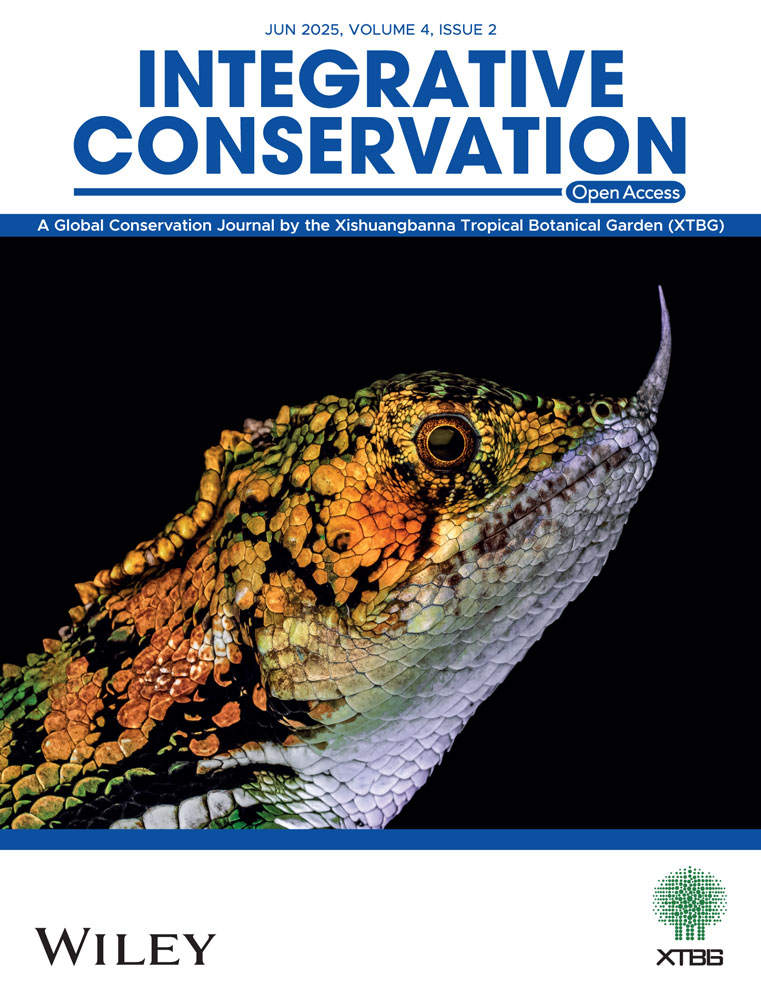Continuous Detection of Wolf Canis lupus in Shangri-la National Park for Three Consecutive Years, Yunnan, China
香格里拉国家公园连续三年发现狼(Canis lupus)的活动
Editor-in-Chief & Handling Editor: Binbin Li
ABSTRACT
enWolves (Canis lupus), as apex predators, play a pivotal role in regulating ecosystems by controlling prey populations and maintaining biodiversity. Historically, wolves occupied a wide range across China, including high-altitude areas in northwest Yunnan. However, human activities, such as habitat loss and persecution, have led to local extirpations in these previously occupied regions. Recent camera trap surveys conducted in Shangri-La National Park recorded wolf activity in subalpine coniferous forests at elevations ranging from 3670 to 3870 m between 2022 and 2024, providing direct evidence of their presence in northwestern Yunnan. This rediscovery highlights the ecological significance of protected areas and the need for long-term biodiversity monitoring to conserve apex predators.
摘要
zh狼(Canis lupus)作为自然生态系统中的顶级掠食者, 在控制食草动物数量、维持生物多样性方面发挥着关键作用。历史上, 狼曾广泛分布于中国多地, 包括云南西北部的高海拔区域。然而, 由于近数十年来人类活动 (如栖息地破坏和狩猎) 的增加, 这些区域内的狼群活动曾经一度消失。2022至2024年间, 香格里拉国家公园中安装的红外相机在海拔3670至3870米的亚高山针叶林中记录到狼的活动踪迹, 首次为云南西北部狼群的重新出现提供了直接证据。这一发现凸显了自然保护地建设对生态保护的重要价值, 同时强调了长期生物多样性监测对顶级掠食者保护的必要性。
简明语言摘要
zh狼作为生态系统中的关键物种, 通过调控食草动物数量维持着生态平衡。尽管狼曾广泛分布于云南西北部的高海拔地区, 但数十年间的盗猎与栖息地破坏导致其区域性灭绝。直至2022至2024年, 香格里拉国家公园中的红外相机在海拔3,670至3,870米区域重新记录到狼群活动, 证实了这一濒危物种在当地的回归。此次发现印证了科学管理的保护区对濒危物种恢复的重要作用, 同时,持续监测狼和其他濒危物种的种群动态仍至关重要, 这有助于确保保护措施的长期有效。
Summary
enWolves play a vital role in controlling plant-eating animal populations and maintaining thriving ecosystems. Though once widespread across northwestern Yunnan's high mountains, decades of hunting and habitat loss drove them to local extinction—until 2022–2024, when motion-activated cameras in Shangri-La National Park captured wolves at elevations of 3670–3870 m, confirming their return. This rediscovery highlights how national parks, when properly managed, can revive endangered species. However, sustaining their recovery requires long-term monitoring to track wolf populations and other at-risk wildlife, ensuring protections remain effective.
-
Practitioner Points
- ∘
Through the establishment of Shangri-La National Park, local ecosystems are protected while critically endangered species—including wolves—benefit from reversing their local extinctions.
- ∘
Long-term biodiversity monitoring in protected areas is essential for early detection of species recovery or decline, enabling managers to implement timely and adaptive conservation policies.
- ∘
实践者要点
zh
-
保护区建设的生态效益:香格里拉国家公园的建立不仅有效保护了当地生态系统, 更通过逆转濒危物种 (包括狼) 的局部灭绝状态, 显著促进了关键物种的种群恢复。
-
动态监测与政策响应:长期生物多样性动态监测体系是自然保护地管理的重要支撑, 可及时发现物种数量变化趋势, 从而指导保护策略的动态优化与精准实施。
Conflicts of Interest
The authors declare no conflicts of interest.
Open Research
Data Availability Statement
The data that supports the findings of this study are available in the supporting material of this article.




